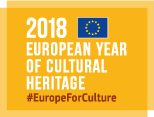An ICT Platform to help restoring and maintaining cultural heritage under Climate Change impacts
Challenge: WHY the innovation has been developed? What problem is addressed and why has not been not solved before?
Cultural Heritage Preservation is a knowledge-based discipline. Predictions, interpretations and conclusions can only be made by comparing data at hand against existing knowledge. Due to the very nature and history of its preservation subjects, Cultural Heritage Preservation presents a number of challenges, which require an interdisciplinary approach. Researchers from different domains (like Cultural Heritage Assets, Stakeholders and their Roles, Climate and Weather Effects, Risk Management, Conservation Actions, Materials, Sensors, Models, IT specialists) collaborate using their own set of sensors and methods, computational models, systems or vocabulary. This causes a vast variety and flow of information to be managed. At present, there is not an ICT platform able to provide a holistic view on the cultural heritage site to let each specialist to be involved along the entire process of CH preservation. Key element is a common encyclopaedic dictionary, that in ICT domain is named “Ont
Solution: WHAT the solution is about? HOW it goes beyond the state of the art?
A new scalable and flexible innovative ICT platform is realized in order to collect and integrate heterogeneous data for a situational awareness and decision support, allowing: to identify and suggest new environmentally sustainable solutions and materials for the long-term maintenance and restoration of CH under the CC impact, taking into account also the economical sustainability and the cultural and social integrity; to define procedures and coordinate people and analysis; to make operators able to share information and analysis. Furthermore, an iterative process is generated where new designed and adopted solutions for the interventions represent information to be ingested in the system, to identify proper maintenance, remediation and restoration actions. Due to the request from the challenge, a new Ontology has been designed as well. It combines CH Assets, Stakeholders and Roles, Climate and Weather Effects, Risk Management, Conservation Actions, Materials, Sensors, Models, Observations and procedures. It gives different tools for the expert users of the different domains to connect and exchange their information to provide info to decision makers suitable to protect CH from
End-users and examples of uses: WHO will beneficiate/ is beneficiating from the solution? WHERE and HOW the solution has been adopted? How will impact people or end-users? Add as more as possible examples of market and society uptakes
The validation of the technical soundness takes place in two European regions and four test beds, that present risk implications and CC issues generalizable to many other European assets. They are: in central Italy the town of Gubbio, where the medieval town wall and the Consoli palace are studied; in Greece, one focus is on the Koules fortress in Heraklion, and the other is the Knossos Minoan palace complex, presumably built around 2000 BC and having its today’s aspect thank to Sir Arthur Evans in early 20th century. The platform considers and supports different level of end-users (i.e.site manager, domain expert, CC expert, Risk assessment expert, etc). according to their role, basic information on the sites and assets are acquired, and the different actors are involved along the entire workflow management according to the terms set in the procedure defined by the regulatory framework established by law and responsibility. The HERACLES Knowledge Base combines the information from all available sources (ex- and in-situ sensors, simulation and climate models, knowledge of expert users, etc.) to improve the situation awareness. The developed user interface (incl. mobile devices) supports the end-users to assess the overall situation of the cultural heritage site of interest with respect to project goals, revise the lesson learnt and draw conclusions about possible upgrades in the future.
Future possibilities: Future market perspectives when the innovation will be fully available or in use
The approach followed by HERACLES is fully multidisciplinary and entails the integration of the knowledge from very different fields (i.e. modelling, sensors, materials, ICT, etc.), for an updated situational awareness and for an effective support to the end-users/stakeholders and decision makers, taking also into account the social and economic aspects, connected to the CH issues management and value. HERACLES pays attention also to the socio-cultural impact of the project solutions, analysing how these solution are perceived by the local communities and how they could affect the cultural and economic value of the CH asset, strictly linked to the real and everyday life and to the local community economy. Since the HERACLES Platform (and its components) provides valuable information and insights to different kinds of stakeholders, there are good future market perspectives. Potential operators of such a solution can be heritage associations, private and/or governmental organizations with CH preserving and maintaining obligations.
Media coverage
https://youtu.be/E_Q0rTp3MRQ
References for more information (eg. website, social media)
Contacts:
Giuseppina Padeletti (gpadeletti@gmail.com)
Jürgen Moßgraber (juergen.mossgraber@iosb.fraunhofer.de)
Application sectors:
- Historical sites
- Other
- Heritage-led urban regeneration and adaptive reuse
- Restoration and conservation of CH
- Tourism economy and impacts
- Heritage communities and participatory approach
- Enabling digital technologies for CH
- Risk management
Objectives:
- Supporting environment (Infrastructures, intermediaires, new business opportunities)
- Regional/Local development
- Knowledge sharing and education
- Other
RRI Dimensions:
- Public Engagement
- Gender Equality
- Science Education
- Open Access
- Governance
Communities:
- Heritage at risk
- Shared management of cultural heritage
- Advanced future technologies for heritage and arts

